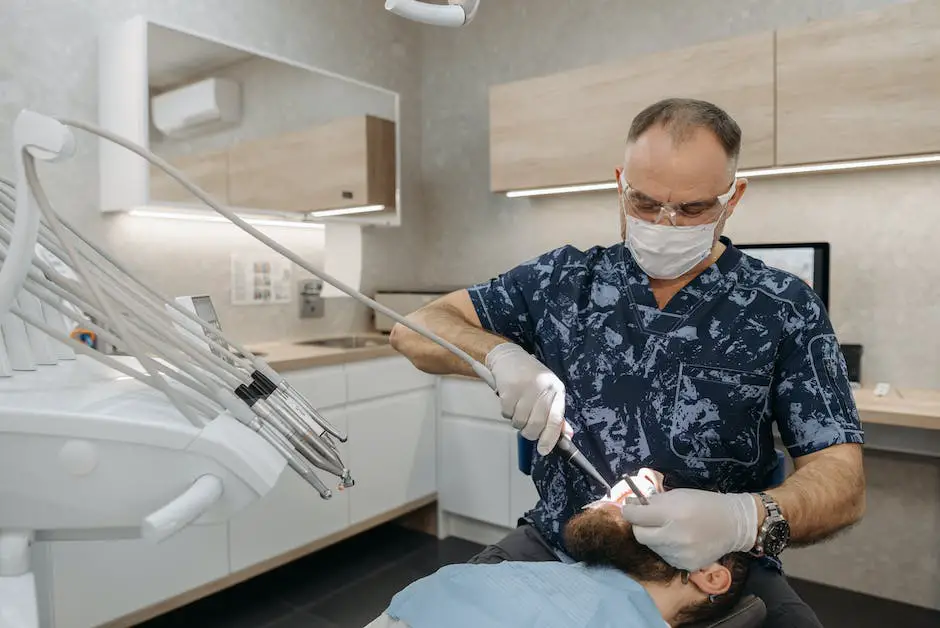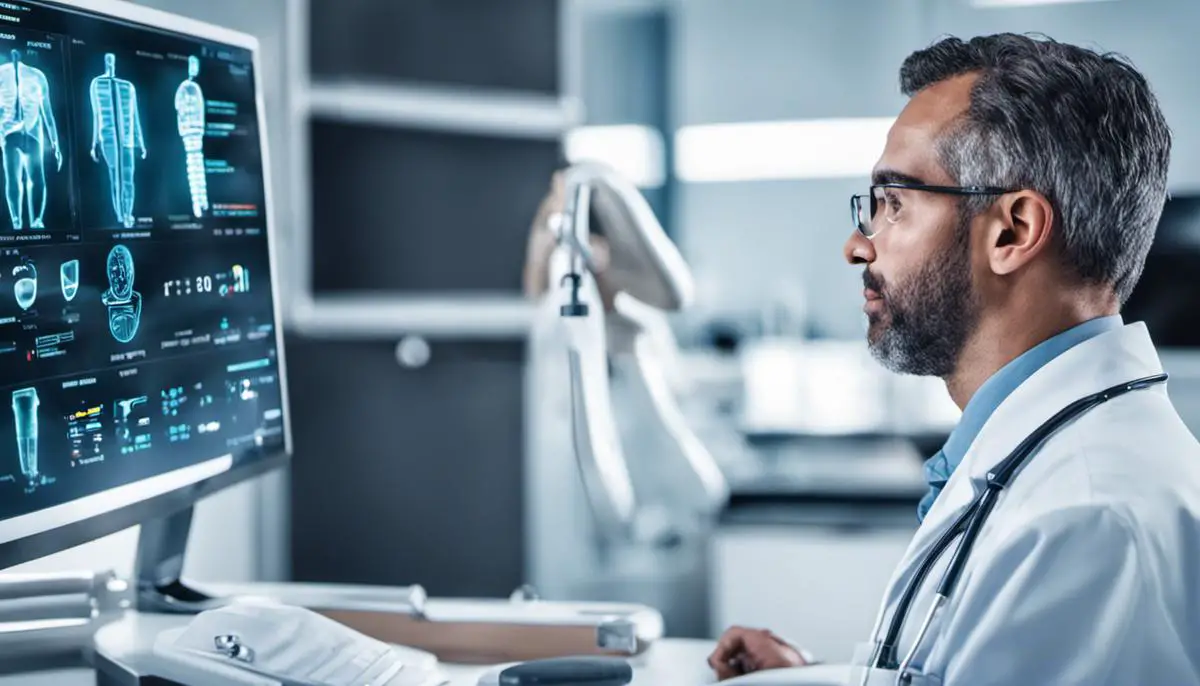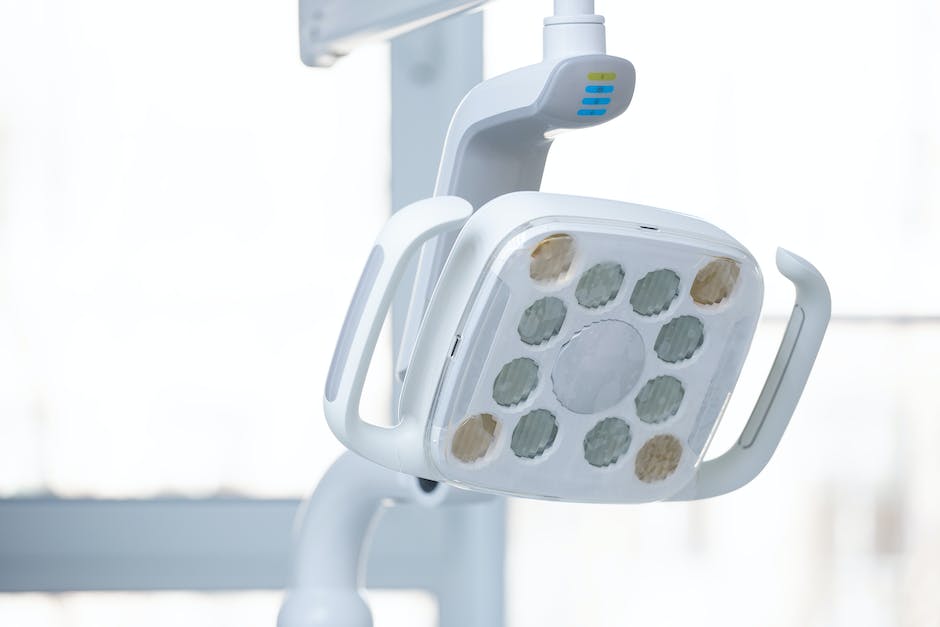The impact of artificial intelligence (AI) is steadily permeating various sectors of healthcare, and dentistry is no exception. The convergence of technological advancement and oral healthcare has been giving rise to applications that span across disease diagnosis, treatment planning, patient management, and beyond. This exposé seeks to elucidate the intricate ways such AI applications are making waves in the field of dentistry. Pioneered by innovative dental practices, these AI-powered tools are potent instruments that can enhance diagnostic accuracy, revolutionize treatment procedures, and redefine patient engagement methodologies.
AI Applications in Dentistry Overview
Disease Diagnosis
One of the key ways that artificial intelligence is used in dentistry is in disease diagnosis. Algorithms trained with machine learning can analyze dental images to identify patterns that indicate the presence of diseases such as cavities, gum disease, oral cancer, and more. This can result in quicker and more accurate diagnoses than traditional methods. AI can thus aid the dentist in making a diagnosis by providing second opinions and spotting things that the human eye might miss.
The use of AI in disease diagnosis also extends to orthodontics. For instance, the technolgy is capable of analyzing orthopantomograms, which are panoramic scanning dental x-rays of the upper and lower jaw. It can assess the growth and development of patients’ jaws and teeth, helping orthodontists to make appropriate treatment plans.
Treatment Planning
Artificial intelligence is beneficial for treatment planning in dentistry. AI algorithms can examine the patient’s dental history, current condition, and relevant medical information to suggest the most suitable treatment options. These plans are incredibly detailed, involving everything from the amount of anesthesia needed to the best tools for the procedure.
AI also takes into account patients’ previous responses to certain treatments and their clinical outcomes to ensure the most effective and least invasive procedures are chosen. These factors, combined with expert judgment from the dental professional, hence ensure that effective treatment plans can be prepared.
Patient Management
AI is a valuable tool for patient management in various ways. AI-powered chatbots, for instance, can handle routine patient inquiries and schedule appointments, thereby reducing administrative workload. These chatbots can function 24/7, providing instant responses to patients and improving their overall dental care experience.
Artificial intelligence can also analyze patients’ feedback on their dental experience. This feature enables the practice to make improvements and tailor their services to meet patients’ needs and preferences better.
Preventive Dentistry and Patient Education
Another critical application of AI in dentistry is preventive dentistry. AI can predict potential dental issues based on lifestyle habits, genetic factors, and previous medical history. This proactive approach can help prevent serious dental problems before they occur.
Moreover, AI-powered platforms can also educate patients about oral hygiene, proper brushing and flossing techniques, dietary habits, and more. It readily makes this information accessible to patients, promoting better oral hygiene awareness and overall dental health.
The Role of Artificial Intelligence in Dentistry
Artificial Intelligence (AI) is making a huge impact on dentistry, far beyond initial applications. With a surge in relevant AI technological research, an industry transformation is on the horizon. AI’s influence goes a long way in boosting efficiency in dental procedures and significantly elevating the quality of services offered. Given the swift advancements, AI is projected to engrain itself even more profoundly in dentistry, clearing the path ahead for more technological breakthroughs.

AI in Dental Imaging and Diagnosis
Applications of Artificial Intelligence in Dental Practices
AI’s rapid progression is instigating revolutionary changes in numerous fields within dentistry. It’s largely due to AI’s potential to expedite procedures and improve accuracy rates. Some of the most notable uses of AI can be witnessed in dental imaging techniques and disease detection methods, marking the onset of a novel era in dental healthcare delivery.
AI’s Role in Dental Imaging Techniques
AI’s role in dental imaging techniques fundamentally reduces the chances of human error, increases efficiency, and augments the accuracy of diagnosis. Primarily, the integration of AI into dental imaging enables the software to identify features that a human might miss and accurately interpret these images in a fraction of the time.
AI platforms are being developed to recognize patterns within complex datasets, such as dental x-rays and scans. As an example of this, tools such as convolutional neural networks (CNNs), an advanced machine-learning algorithm, are trained to analyze digital images and identify pathologies efficiently and accurately. This greatly reduces the time a dental practitioner spends on image interpretation, therefore, increasing the time spent treating and guiding the patient.
Machine-Assisted Diagnosis in Dentistry
Machine-assisted diagnosis powered by AI is giving a new dimension to the early diagnosis of dental diseases. AI tools are trained using large amounts of diagnostic data and can recognize patterns associated with various oral conditions. This has significant implications for the detection of diseases such as periodontitis, caries, and even oral cancer.
A critical aspect of the AI machine-assisted diagnosis is its precision and reliability. Because the system relies on vast amounts of data and intricate algorithms for diagnosis, human errors can be mitigated. As a result, conditions can be picked up in the early stages leading to prompt treatment and a better prognosis for the patient.
Reduction of Human Errors
Human error is a persistent challenge in the medical field. These can be reduced by implementing AI systems in dental practices. AI tools used in dentistry reduces the likelihood of misdiagnosis, omissions, and oversights. For instance, AI software can assess thousands of radiographs in seconds, minimizing the chance of overlooking subtle signs of diseases.
Paving the Way for Early Diagnosis
Early diagnosis of dental conditions can significantly improve treatment outcomes. AI algorithms have the potential to change the future of early diagnosis procedures in dentistry. As these machines continue to learn from large scale, diverse, and complex datasets, they are becoming adept at identifying even the earliest stages of disease, often before they become clinically visible. This could potentially revolutionize early intervention and shift dental focus towards more preventive care settings rather than cures.
Artificial intelligence is paving the way for a transformative period in dentistry. Its ability to facilitate quick, accurate, and efficient diagnosis significantly improves patient care. Furthermore, the pivotal role of AI in disease prevention and early intervention broadens the scope of dental professionals, fusing technology and clinical practice for an improved healthcare experience.

AI in Treatment Planning and Execution
The Role of AI in Predicting Outcomes and Devising Treatment Plans
Artificial Intelligence is indispensable when it comes to assessing potential outcomes of dental procedures and creating effective treatment strategies. By considering a patient’s dental history and current oral health status, AI technologies can identify suitable treatment courses. AI-enabled software tools, for instance, can assist dentists in examining dental radiographs to identify caries, periodontal diseases, and other oral pathologies. The anomaly detection capabilities of AI not only outperform manual procedures in speed but also in efficiency. Certain AI algorithms are even capable of simulating potential treatment results, further equipping practitioners to make the best possible clinical decisions.
Robotic Assistance in Dental Surgeries
Dentistry has witnessed significant advancements through the integration of AI, one of which is robotic assistance during dental surgeries. Robot-assisted dental implant surgeries, for example, offer dentists a precise and predictable way to perform complex dental procedures. The robotic system assists in pre-operative analysis, intra-operative guidance and immediate post-operative assessment in implant surgery, enhancing the accuracy, efficiency, and safety. It reduces human error by providing consistent performance and pinpoint accuracy, thereby ensuring optimal results.
Role in Orthodontics
In the field of orthodontics, AI can be used to plan treatment, predict the movement of teeth and visualize the final outcome. 3D dental scanners and imaging technology paired with AI can generate a digital model of a patient’s mouth. This can be utilized to monitor progress, design customized orthodontic appliances, and predict the results of the orthodontic treatment. These predictive analytics can guide orthodontic decisions and achieve better treatment outcomes. Smart braces equipped with AI technology can even track the treatment progress, make necessary adjustments, and facilitate remote monitoring by orthodontists, reducing in-person dental visits.
Interpreting Dental Imaging
Artificial Intelligence technology has dramatically transformed the interpretation of dental imaging. Using AI-powered software helps improve detection rates of oral diseases and conditions. The software is capable of reading and interpreting dental imaging such as X-rays, CT scans, and MRIs. It can analyze these images to detect issues such as tooth decay, gum diseases, oral cancer, and other conditions. The earlier these conditions are detected, the more feasible treatment becomes, improving patient recovery and success rates.
Automated Patient Interaction
AI is also used to automate patient interaction in dentistry. AI-powered chatbots and virtual assistants can handle routine administrative tasks such as scheduling appointments, reminding patients about upcoming appointments, and providing post-treatment care instructions. This not only streamlines the administrative process but also improves patient engagement and satisfaction.
Aiding Dental Research
Artificial Intelligence tools are employed in dental research for data collection and analysis. They help researchers in processing large volumes of data quickly and accurately, along with identifying patterns and trends that might get missed in traditional data analysis. Recent advances in AI allow it to analyze scientific literature and identify relevant research, speeding up the literature review process and significantly aiding evidence-based dentistry.
Artificial Intelligence (AI) is rapidly transforming the world of dentistry. With its precision, efficiency, and effectiveness, AI serves as an indispensable tool, contributing to better dental care and treatment processes.

AI in Patient Management and Engagement
Incorporating AI into Patient Management Systems
The integration of AI into dentistry isn’t limited solely to treatments, as it is also revolutionizing the way patient management systems function. With automated data collection facilities, AI allows for smoother storage and retrieval of patient histories. This greatly enhances the quality of patient care by providing easy access to vital information such as treatment histories, allergies, medications, and test results.
In addition, AI works as a predictive tool in patient management systems. By analysing data, it can foresee patient behaviours, understand their needs, and predict preferences. This helps in delivering proactive dental care. Moreover, its capacity to alert healthcare professionals about any inconsistencies or discrepancies within the data helps in reducing medical errors.
Optimizing Appointment Scheduling with AI
Appointment scheduling is another area where AI can streamline administrative tasks. AI-based scheduling software can optimize the process of making, changing, or canceling appointments. This software connects with the dentists’ and patients’ calendars, eases the coordination, and ensures that no double-bookings happen.
Besides, AI-enabled software can also monitor patients’ appointment histories, frequented timings, and preferred days. This facilitates prediction of when the patient will next require a dental appointment. The system can then send out automated reminders or prompts to schedule an appointment, enhancing the efficiency of patient management.
Improving Patient Engagement with AI
AI can play a substantial role in improving patient engagement in the dental care space. AI-powered interactive chatbots, for example, can handle a variety of patient inquiries, ranging from booking appointments to explaining treatments or dental care routines. By using natural language processing, these chatbots can understand and respond to patient queries in real-time, providing instant responses and 24/7 support. This not only improves patient engagement but also alleviates the burden on the administration staff.
Additionally, AI chatbots contribute to patient education, reminding them about their dental hygiene practices, upcoming appointments, or medication intake, thereby enhancing patient compliance with their recommended treatment plans.
AI and Its Role in Streamlining Dental Administration
In the realm of dentistry, AI plays a significant role in enhancing the efficiency of administrative tasks at dental clinics. Its multifaceted usage ranges from simplifying appointment scheduling and managing patient data, to assisting in electronic health record (EHR) management, expedited billing, insurance verification, and effective communication. Consequently, the contributions made by AI allow dental health professionals to devote more time to direct patient care.
AI, empowered by machine learning algorithms, can automate the traditionally time-consuming and error-prone process of billing. AI can conveniently determine costs based on detailed patient treatment histories and corresponding insurance coverage, thereby reducing inaccuracies in billing. Additionally, AI enables swift and precise verification of patient insurance. This includes automated authentication of coverage, deductible sum, and co-payments before a scheduled appointment. This optimization enhances financial management within dental practices and ensures patients are well-informed about their financial commitments.
In conclusion, the introduction of AI into dental practices leads to improved efficiency, heightened accuracy, and patient-focused care.

Future of AI in Dentistry
AI’s Current Impact on Dentistry
In today’s technological age, Artificial Intelligence (AI) has steadily embedded itself into various aspects of modern dentistry, most notably in the realm of diagnostics. Utilization of AI-powered software aids in the identification and diagnosis of dental diseases and conditions by meticulously analyzing scans and images. Applications are enabled to recognize deviations from the norm in a scan and, through the application of complex algorithms, suggest potential oral health risks specific to a patient. Certain AI technologies are even equipped to examine 3D scans of a patient’s oral cavity and bring anomalies to light. These discrepancies could imply the presence of conditions such as gum diseases, cavities, and even oral cancer.
AI-powered Dental Prosthesis Design and Manufacturing
In addition to diagnosis, AI is heavily used in the design and manufacturing of dental prostheses, such as crowns, dentures, and braces. CAD/CAM software uses AI to develop a 3D digital model of a patient’s dental cavity. This model assists the dentist in designing dental prosthesis with a precise fit. AI algorithms can predict the exact location of the dental prosthesis, making the procedure less invasive and decreasing recovery time.
AI and Dental Practice Management
Artificial Intelligence is used for administrative functions as well. Intelligent virtual assistants and chatbots are being used in dental clinics to schedule appointments, send reminders, and answer simple queries by patients. This eases the burden on administrative staff and leads to greater efficiency in clinic management.
Educational Purpose of AI in Dentistry
AI is also used in education and training of dental students. Virtual reality (VR) technologies integrated with AI are being used for practical training. These VR instruments have AI modules that simulate real-life dental scenarios. This helps the students to practice procedures before treating actual patients.
Future Potential of AI in Dentistry
AI in dentistry is poised for significant growth with the advancement of technologies. Improved algorithms and machine-learning techniques will likely boost the accuracy of predictions related to oral diseases. Research is underway to develop AI applications that can predict the risk of oral cancer reliably. AI could also help in understanding the link between oral health and systemic diseases by analyzing patterns in a large data pool.
Emerging technologies like AI-powered dental robots could revolutionize dentistry. These robots, guided by AI algorithms, will be able to perform dental procedures like cleanings and simple extractions with extreme precision, reducing the scope for human error.
Challenges in AI Implementation in Dentistry
While the future prospects of AI in dentistry are promising, their implementation faces several challenges. The main hurdles are data privacy concerns, lack of clarity in regulation, and high costs of AI technology development. AI algorithms need large volumes of data for training, and this data collection and use could pose privacy risks. Also, the cost of developing and implementing AI technologies is quite high, making it less accessible to smaller dental practices.
Nonetheless, with continuous research, advancements, and improvements in security and privacy protocols, AI has the potential to transform dentistry in the future dramatically.

The saga of AI in the domain of dentistry is unraveling, and it is brimming with potential. The future holds the promise of transformative changes that would potentially redefine the complete spectrum of dental practice. From refining diagnosis and augmenting the precision of procedures to reimagining patient interfaces, AI fortifies itself as an indispensable tool. While challenges exist, they are eclipsed by the magnitude of the benefits that the technology promises to deliver. As research pushes the boundaries of AI, the dentistry field stands on the precipice of an possible revolution – a leap forward that would usher in an era of unprecedented efficiency, accuracy, and patient satisfaction.


